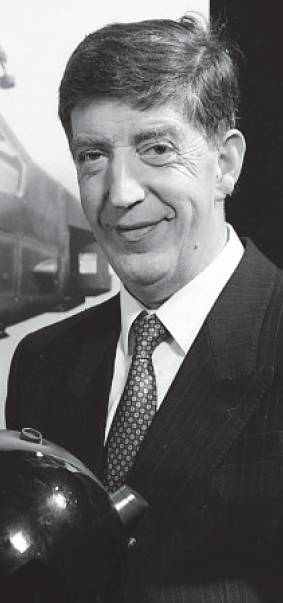Obituary
Dick Collinson was born in East Ayton, North Yorkshire, on 16 November 1926, and was educated at Palmer’s School, Grays in Essex. He had been in the Air Training Corps in the early part of the war but in 1944, aged 18, he volunteered for the Fleet Air Arm, he failed the medical and found himself instead as an artificer aboard the frigate HMS Modeste.
His career in engineering followed service in the Royal Navy from 1944 to 1947, when he took the University of London engineering degree course at Battersea Polytechnic, graduating with a first-class Honours Degree in Electrical Engineering in 1951. Despite his military service in the Royal Navy, his real passion was flight and he subsequently spent his entire working career in the avionics industry.
 His first job on graduating was with the Bristol Aeroplane Company where he worked on the Bloodhound Missile Control System.
His first job on graduating was with the Bristol Aeroplane Company where he worked on the Bloodhound Missile Control System.
Dick then joined Elliott Bros as a Development Engineer at Borehamwood in 1953. He transferred to the newly formed Aviation Division in January 1954; the engineering department was only ten strong at that time, so it really was a case of being in at the beginning.
During his term at Borehamwood, he worked on the Blue Steel Inertial Navigation System from project initiation and was responsible for the first Blue Steel Navigator which was flown successfully in early 1959.
He was appointed Chief Systems Engineer of the Military Aircraft Controls Division (MACD) in 1960 and transferred to Rochester in early 1961 where the first few years were spent on Inertial Navigation Systems development and Air Data Systems for Lightning and Buccaneer aircraft.
In 1961 he became Chief Engineer of the newly formed Flight Automation Research Laboratory (FARL). He became Divisional Manager of the Laboratory in 1962 and over the next three years its activities expanded into a wide range of new developments. Examples which have since been successfully exploited are the Hydraulic Quadruples Actuator developed by Flight Controls Division (FCD) for the Tornado and the ‘strapdown’ attitude sensor system developed by the Gyro Division for the new generation of torpedoes.
In January 1966 he was appointed Divisional Manager of the Flight Instruments Division (FID). This was the year the company started its successful penetration of the US market and FID secured the contract for the Air Data Computer for the Lockheed C-5A Galaxy in the face of fierce competition.
The appointment of Divisional Manager of the Inertial Navigation Division followed in October 1968. The Division’s major task over the next two years was the development of the Navigation Weapon Aiming System (NAVWASS) for the Jaguar aircraft.
Dick’s interests were always directed towards the engineering aspects of the business and he undertook a staff appointment as Project Development Executive in January 1971 to cover the field of new products and technology
In April 1972 he returned to FARL as Divisional Manager. The laboratory’s activities were expanded and a whole range of new technologies and concepts were initiated and developed for the product divisions to exploit for many European and US aircraft. These ranged from fibre optics for the Boeing YC-14 flight control system to helmet mounted displays and sighting systems. The ‘Lab’ was responsible for most of the major new products developed by the company, such as fly-by-wire flight control systems, holographic head-up displays, helmet-mounted displays, uncrewed aircraft systems, MIL STD 1553B data bus systems, display generation systems, video map displays and an optically signalled flight control system for airships – fly-by-light.
Dick Collinson received his 25 years’ service award on Monday 24 July 1978 and was presented with a quartz clock by W H Alexander. Towards the end of his career Dick was appointed Technical Executive in GEC Avionics. responsible to the Technical Director for advising on future avionics research.
Dick Collinson retired on 1 November 1992 after over 38 years of distinguished service at Elliott Bros through all the name changes to Marconi Electronic Systems.
Dick Collinson was a Fellow of The Institution of Engineering and Technology and a Fellow of the Royal Aeronautical Society. For many years he was a committee member of the Medway Branch of the Royal Aeronautical Society and he gave frequent lectures to the RAeS Branch.
In 1989 the RAeS announced the award of the Society’s Silver Medal to Dick Collinson ‘in recognition of his most significant contribution to research and development for advanced avionics equipment and systems and to their service in the UK and abroad’. The medal was presented at the Wilbur and Orville Wright Lecture at the Society in London.
After retiring he wrote the text book Introduction to Avionics Systems, now in its fourth edition, which is the bible for avionics students and has been translated into several languages, including Chinese and Arabic.
In his younger days he enjoyed rambling, swimming and ‘caravanning’. In his retirement Dick also continued with his pastime of oil painting, with a particular interest in aviation art.
Dick married Brenda in 1957 and enjoyed 62 years of marriage. Together they were part of the close-knit group that helped make Elliott Bros such a global success. He had two sons and a daughter, five grandchildren and one great grandchild.
Chris Bartlett